Dutch studio KAW employed a range of technical and architectural concepts to minimise the environmental impact of this house in Rotterdam, including introducing large windows into its brick facades to promote natural light and passive heating.
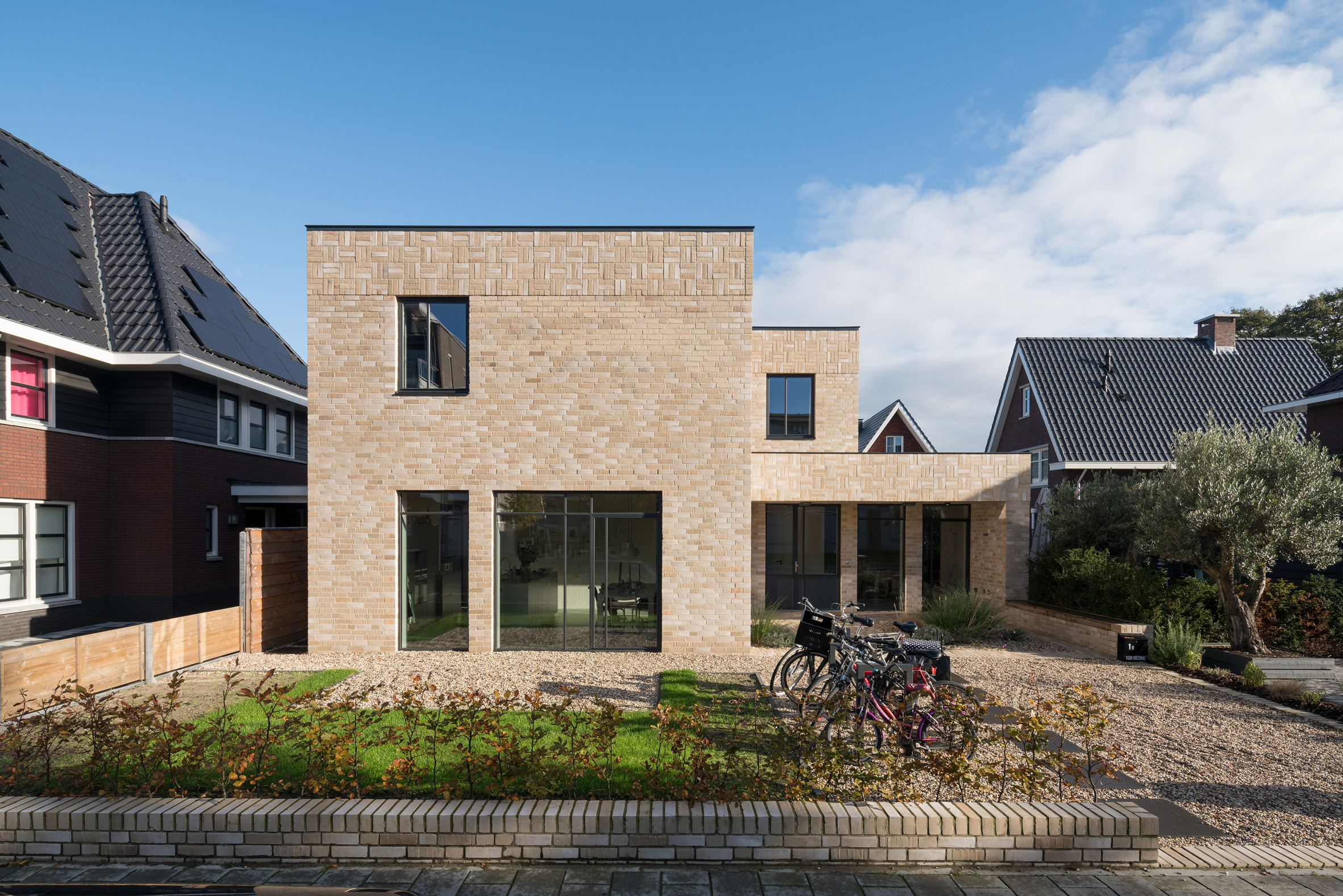
The ActiveHouse property is the home of Reimar von Meding, a partner at KAW, who wanted to demonstrate how sustainable principles implemented across the practice’s projects could be applied to an affordable contemporary residence.
The studio, which has offices in Rotterdam, Groningen and Eindhoven, regularly works on projects that explore innovative approaches to sustainability, such as its transformation of a former police station into a comfortable and low-impact refuge for victims of human trafficking.
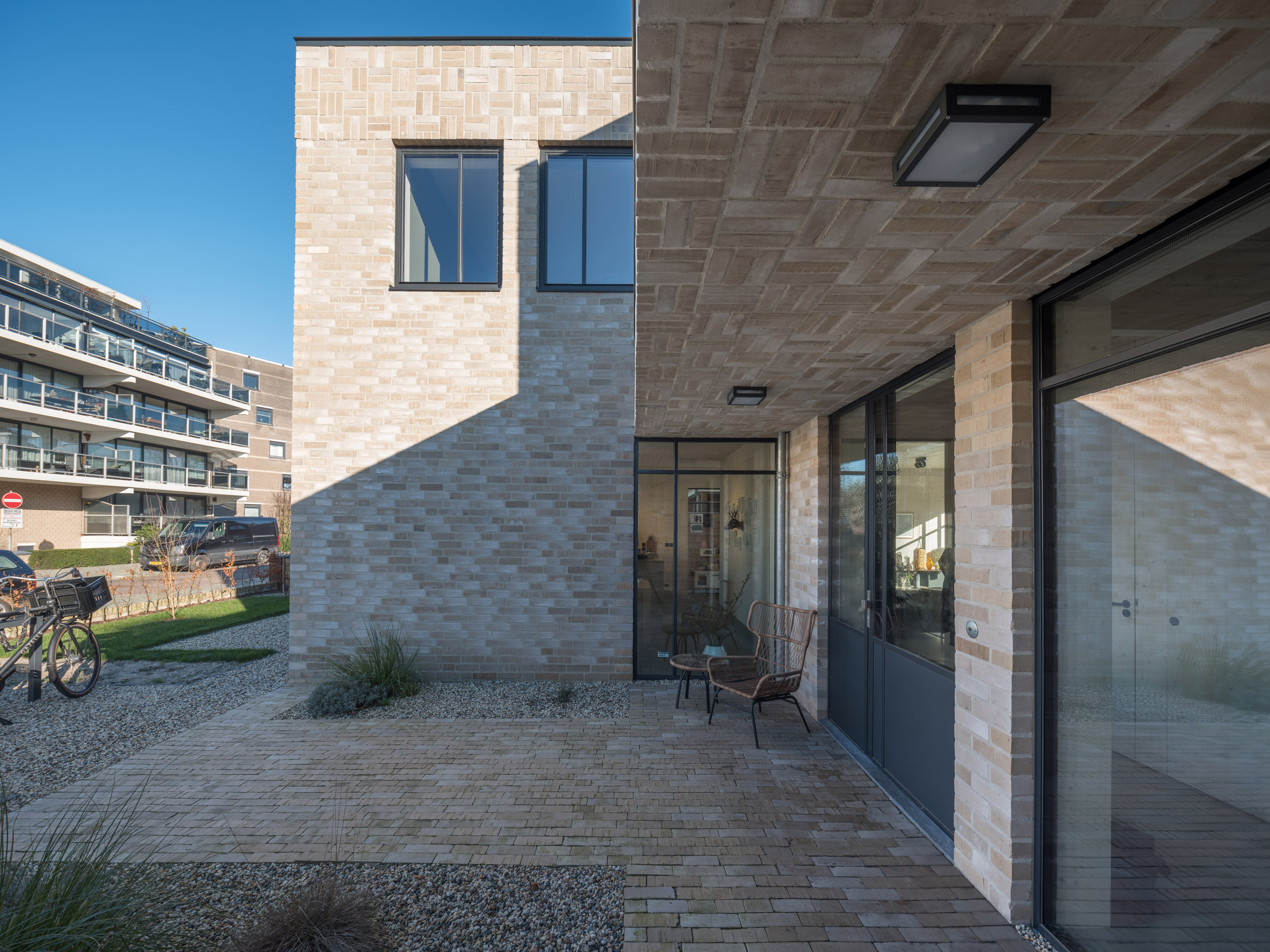
“For our ActiveHouse we took the chance being architect, client and user in one,” Von Meding told Dezeen.
“This gave us the opportunity to develop a scheme with a range of – for Dutch circumstances – relatively new products, building principles and kinds of energy production.”
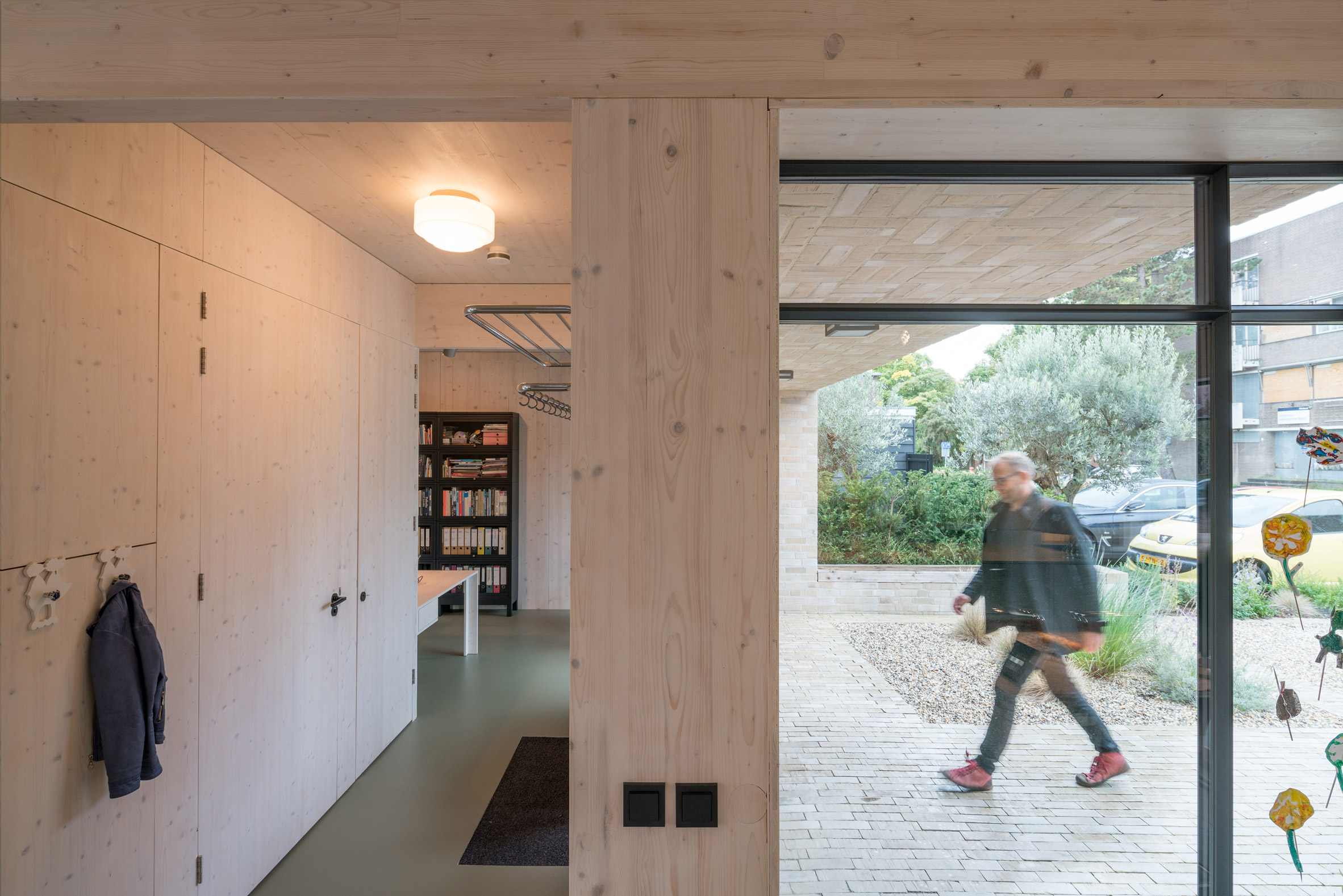
The house is located within a new urban neighbourhood based on traditional Dutch housing schemes from the 1930s, which occupies the site of a former hospital close to the city centre.
The architects drew inspiration from brick villas designed by German modernist architect Ludwig Mies van der Rohe when developing the house’s clean lines and strong connection between the interior and exterior spaces.
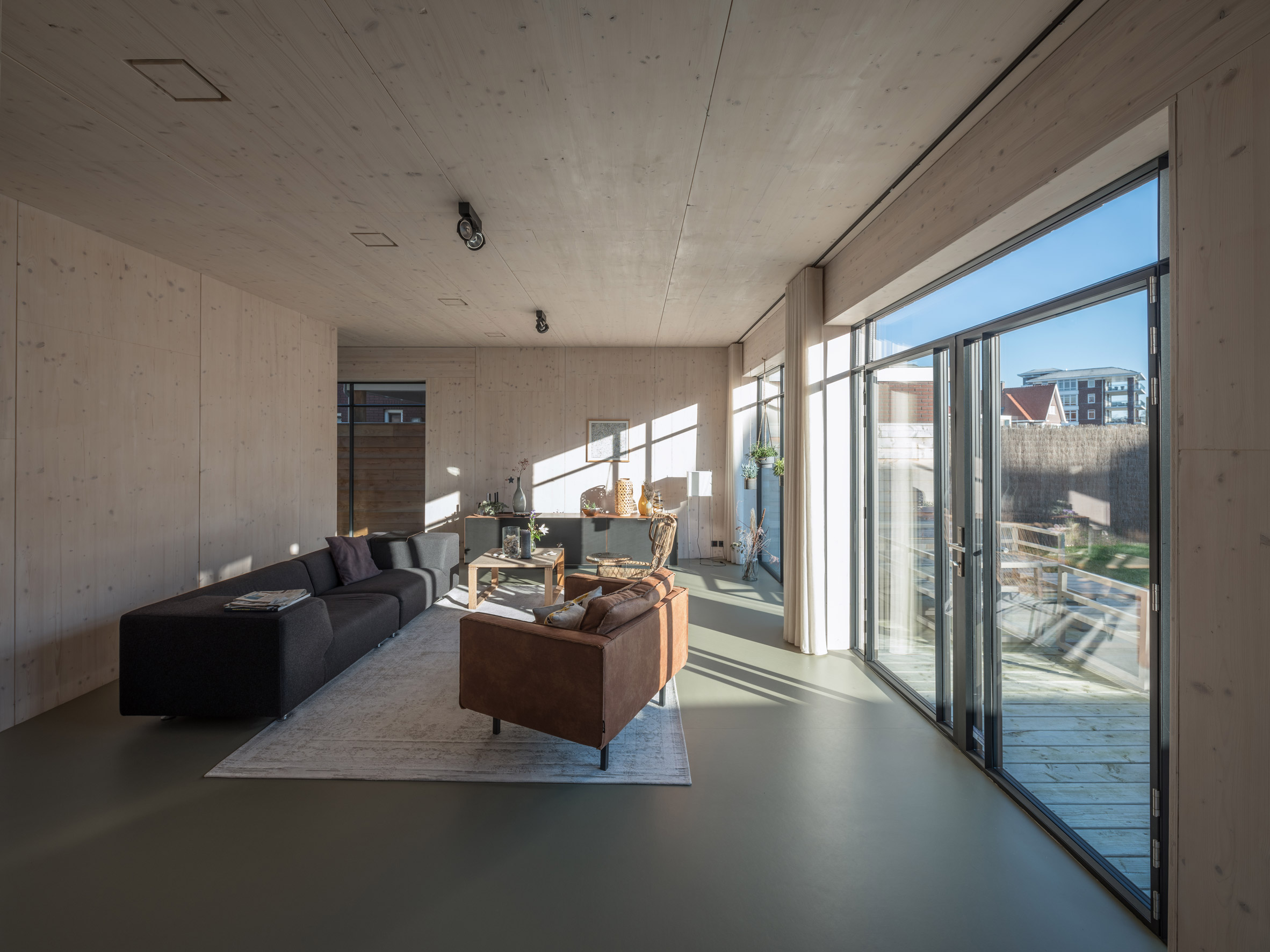
A partly covered terrace located outside the entrance provides a practical outdoor room alongside an extension that was originally designated for use as a garage.
“Because we stopped having a car, we used that volume for an extension and extra room,” said Von Meding. “This gives the volumes of the house that dynamic feeling of stacked cubes you also find in the early works of Van der Rohe.”
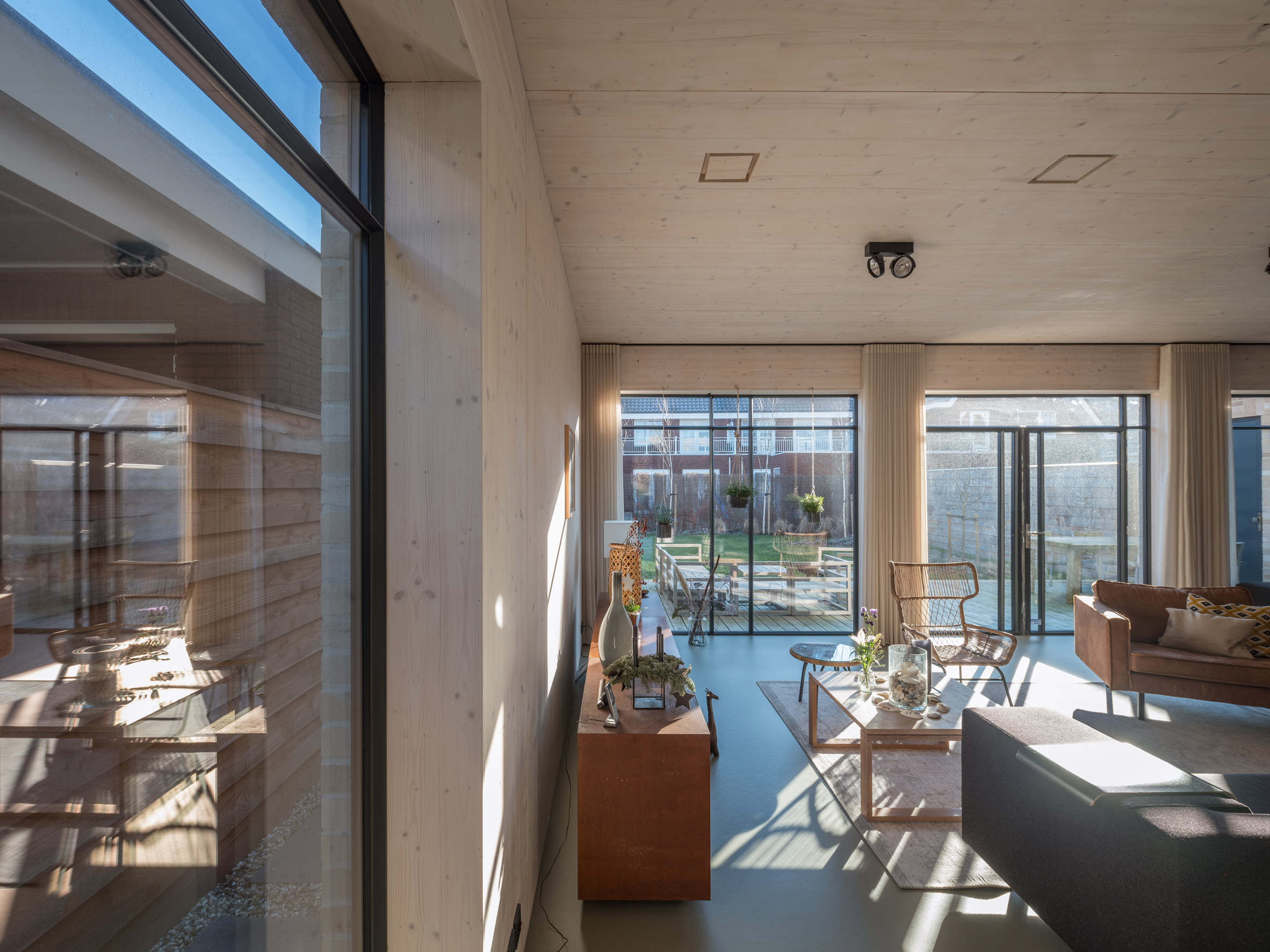
The quality of natural light was a key consideration when designing the house, which prompted the studio to organise the internal layout carefully to make the most of available daylight.
The decision not to include any doors on the ground floor and the introduction of large openings ensures the spaces feel bright and connected to the outdoors. A staircase divides the ground floor into zones for the kitchen and living area.
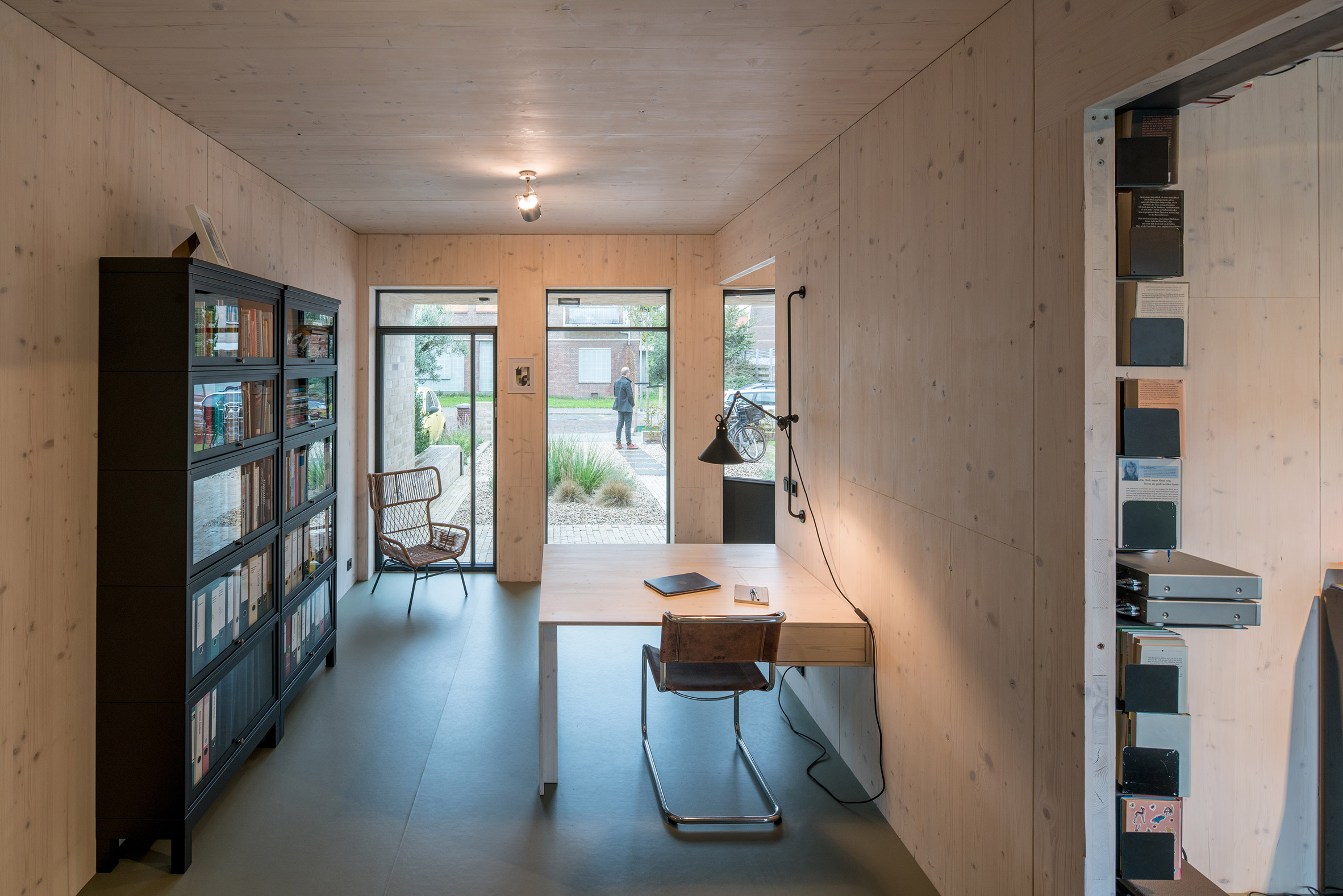
In addition to limiting the house’s dependence on artificial lighting, the glazed surfaces also facilitate passive heating. Additional energy required for heating and hot water is produced by a heat pump that operates in conjunction with solar panels.
Rather than requiring a dedicated plant room to house the machinery and electronics required by the house’s utilities, these technical components are distributed throughout a range of unused spaces around the property.
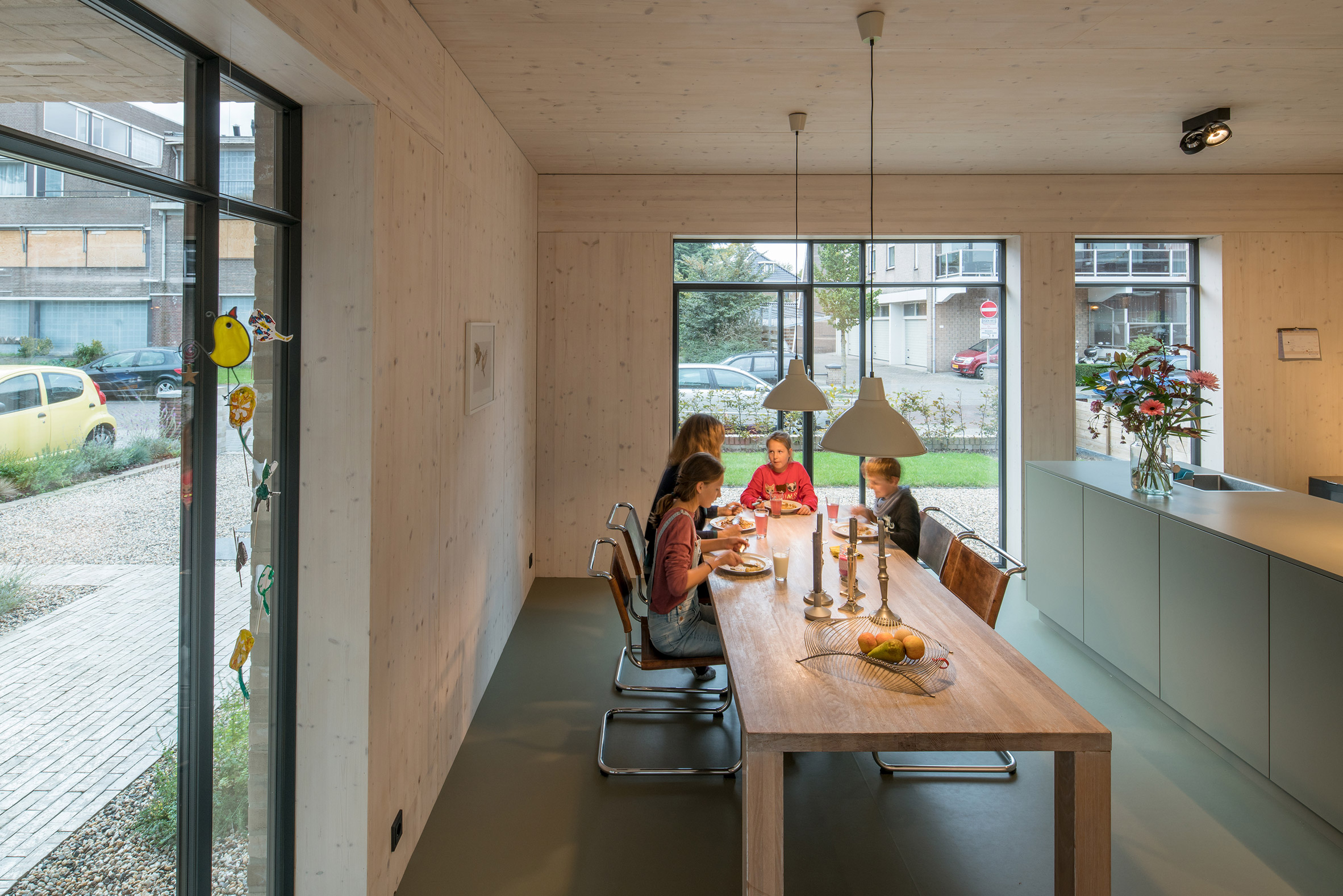
Other sustainable measures include the choice of cross-laminated timber for the house’s structural shell, which reduced the amount of carbon dioxide generated during construction.
The building’s framework was prefabricated off-site using a system that minimises the need for adhesives so components can potentially be recycled. The design also negated the need for any additional supporting steelwork or concrete.
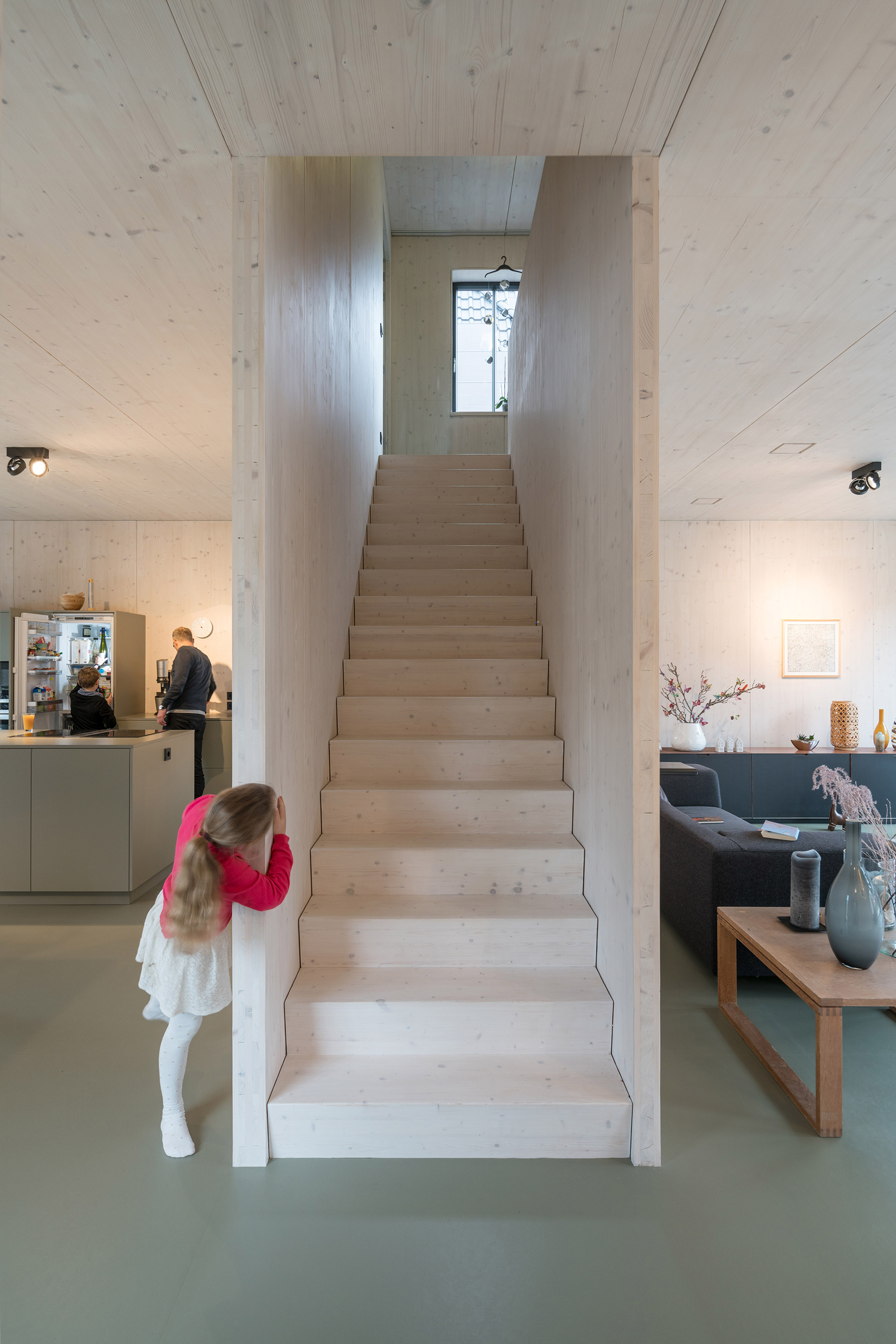
Structural wooden panels are left exposed inside the building and treated with a simple bio-based whitewash. The tone of the treated wood matches that of the pale brick used to clad the exterior and protect the building from the salty sea air.
The only other colour used throughout the interior is a grey-green hue introduced in the form of the marmoleum flooring and other surfaces including the kitchen units and wardrobe doors.
Photography is by Ossip van Duivenbode.
The post KAW’s ActiveHouse is a sustainable home that generates more energy than it consumes appeared first on Dezeen.
